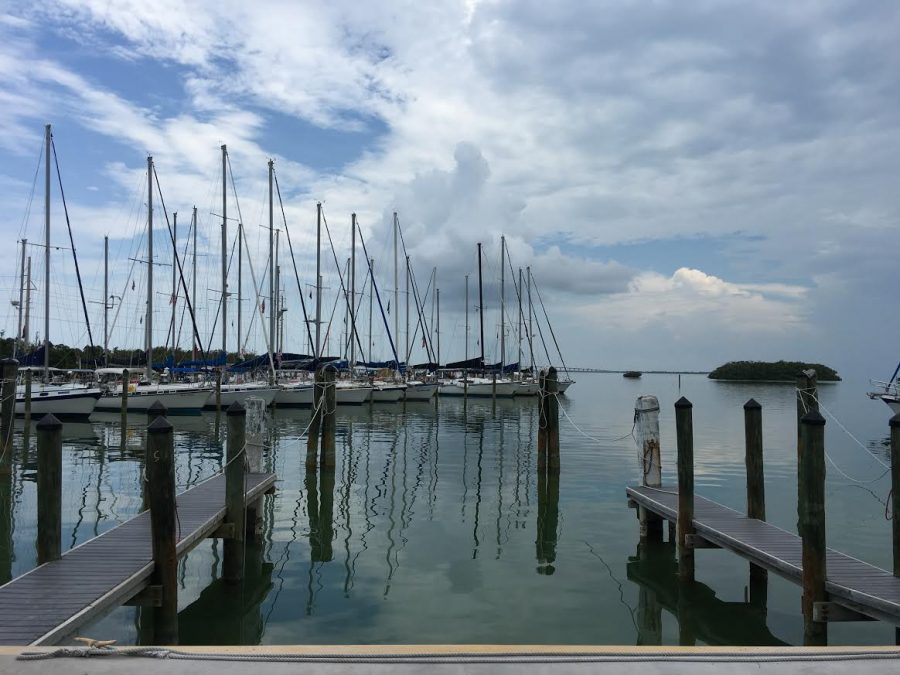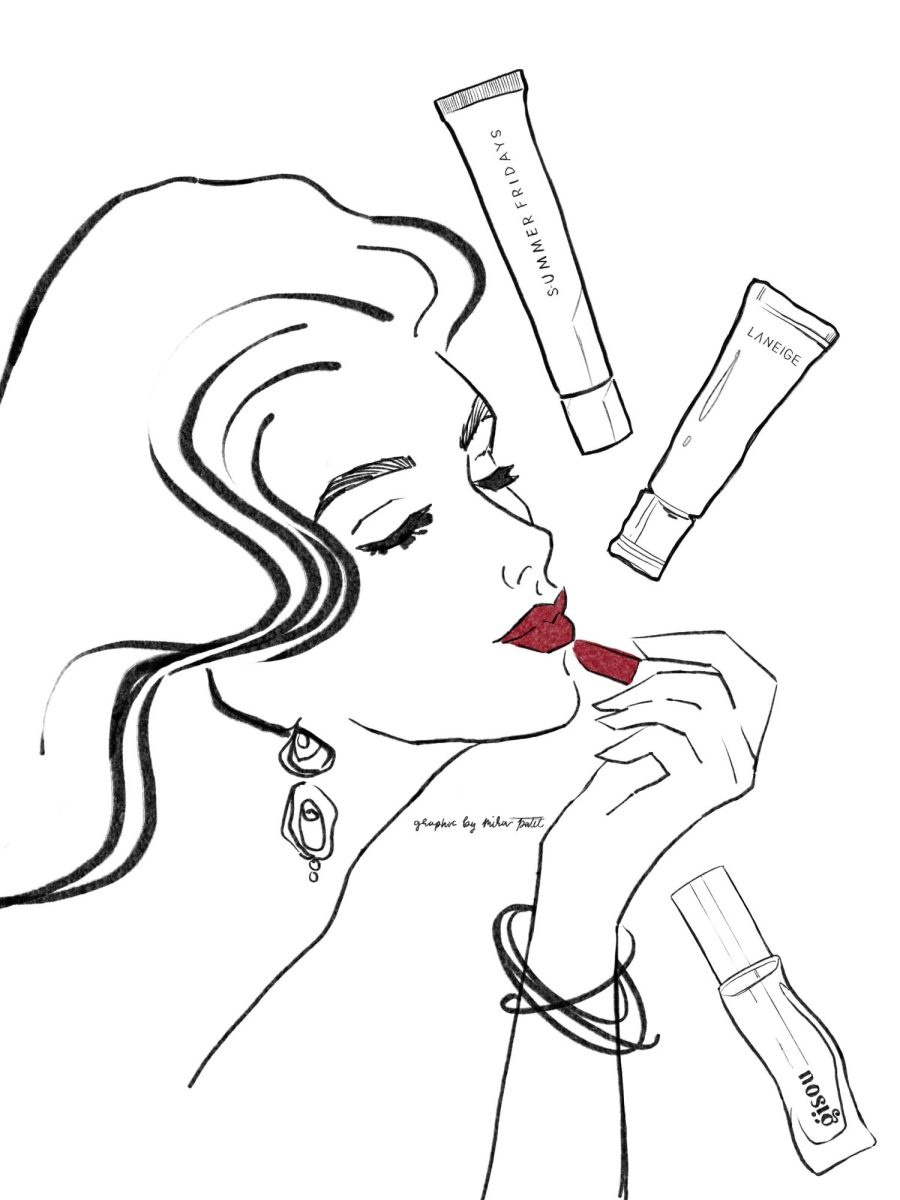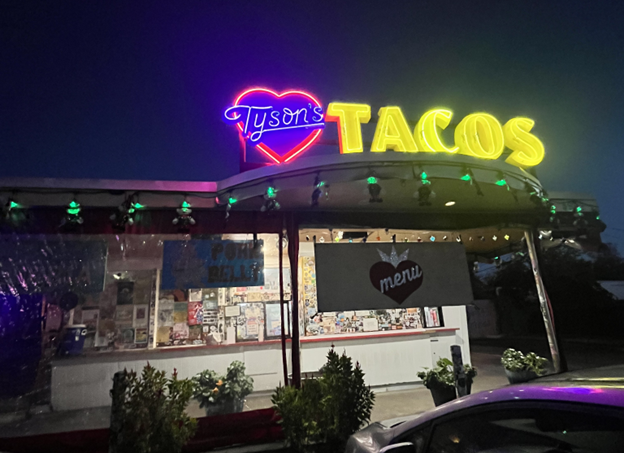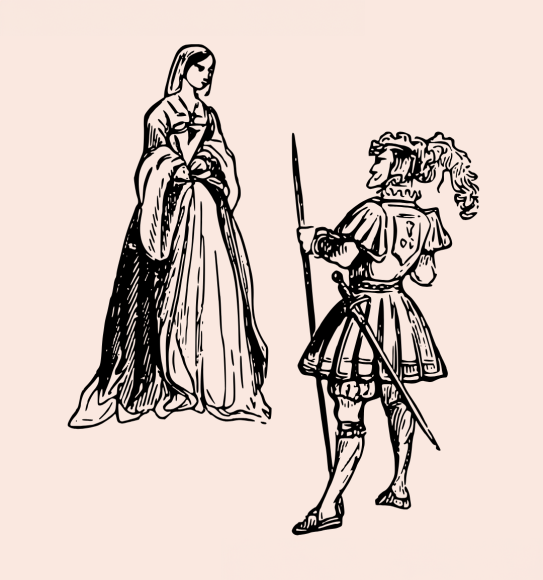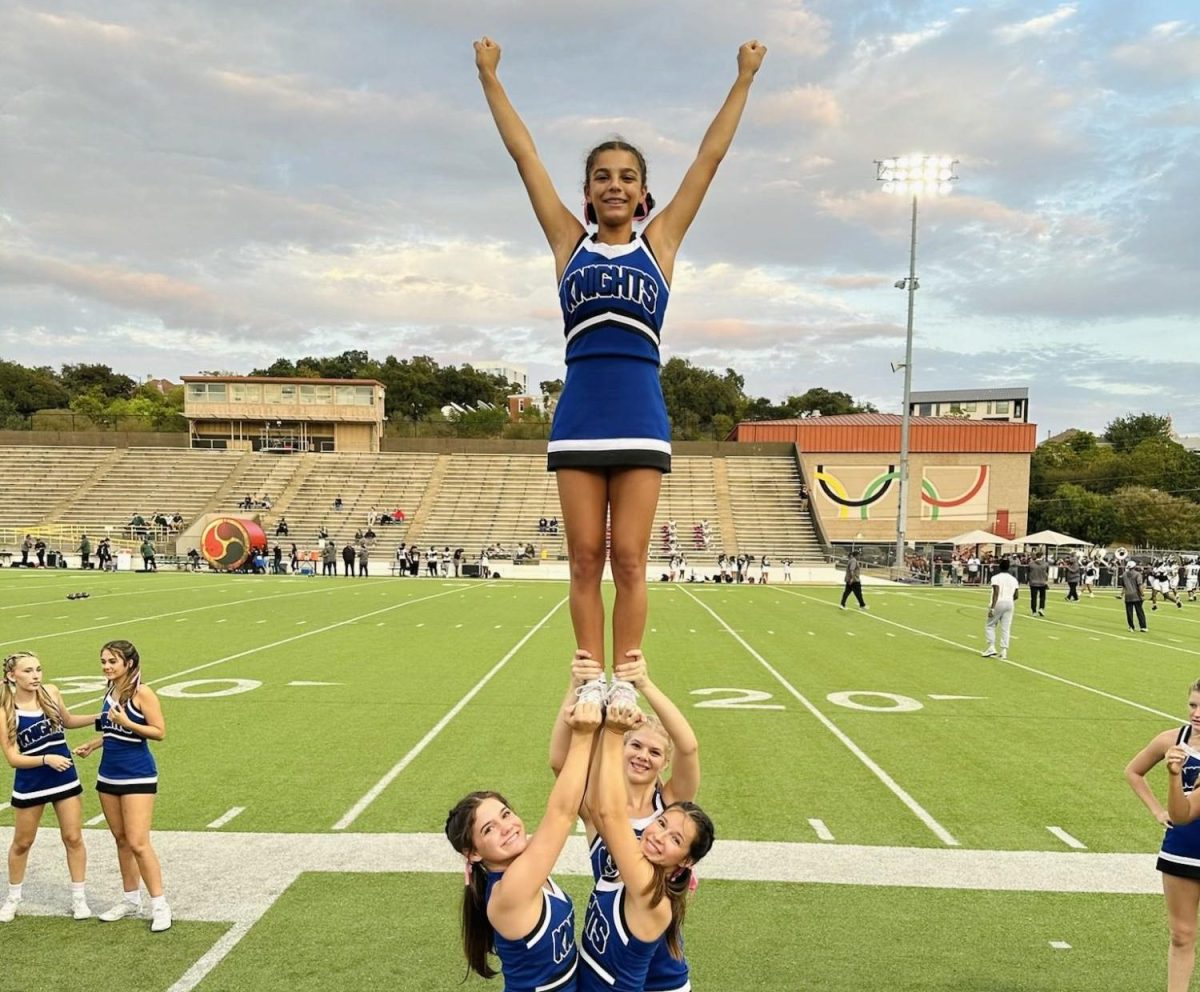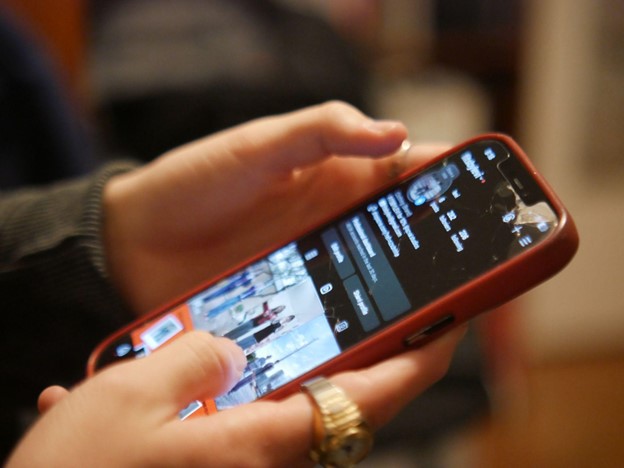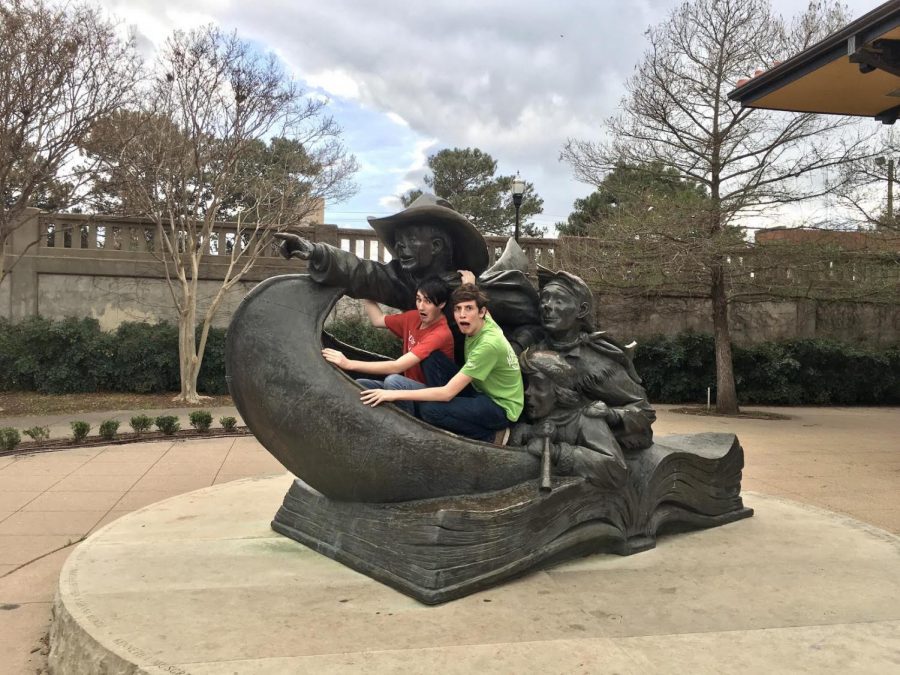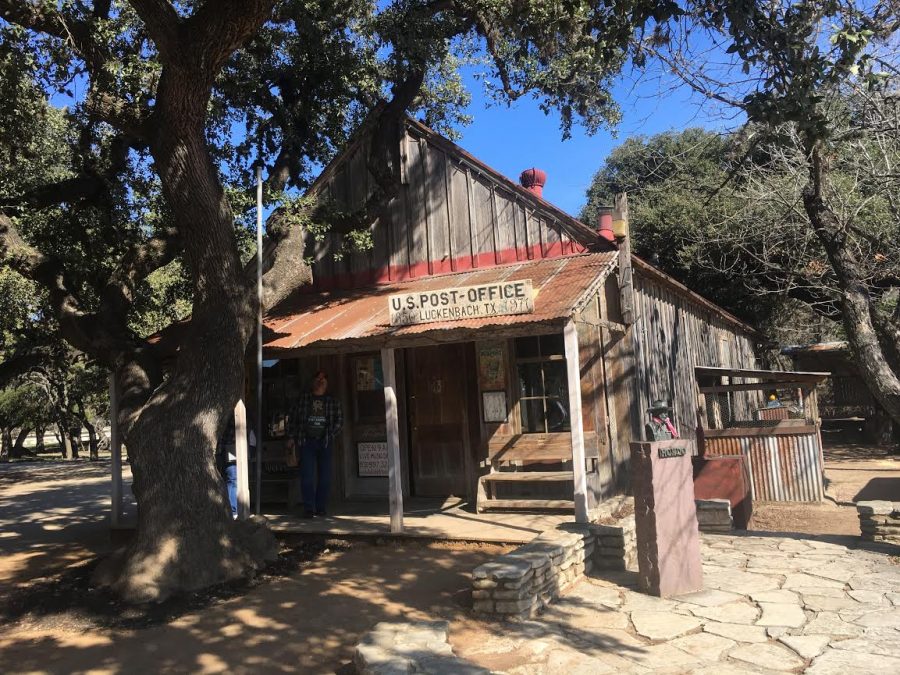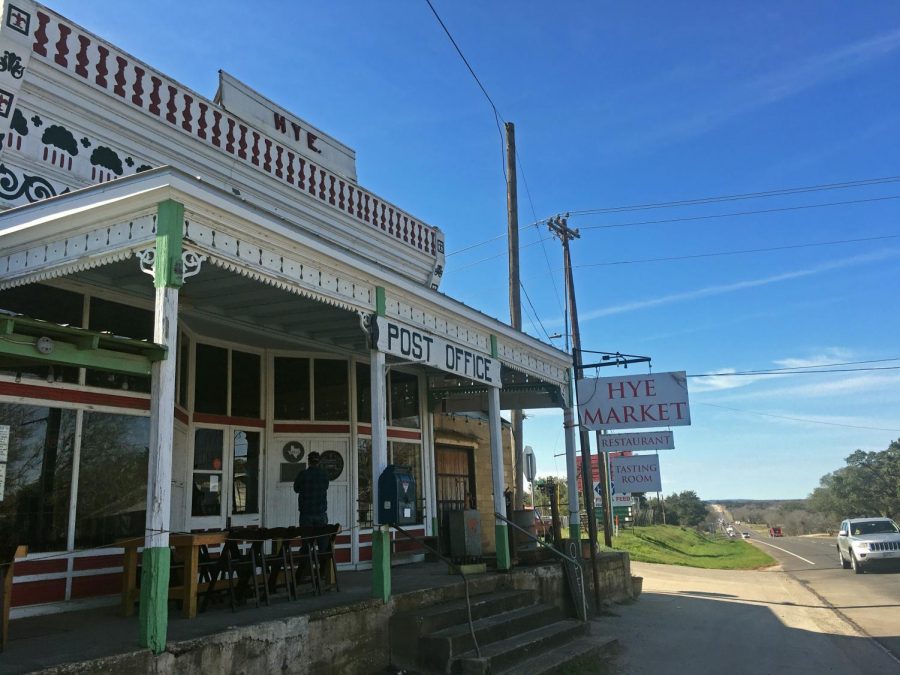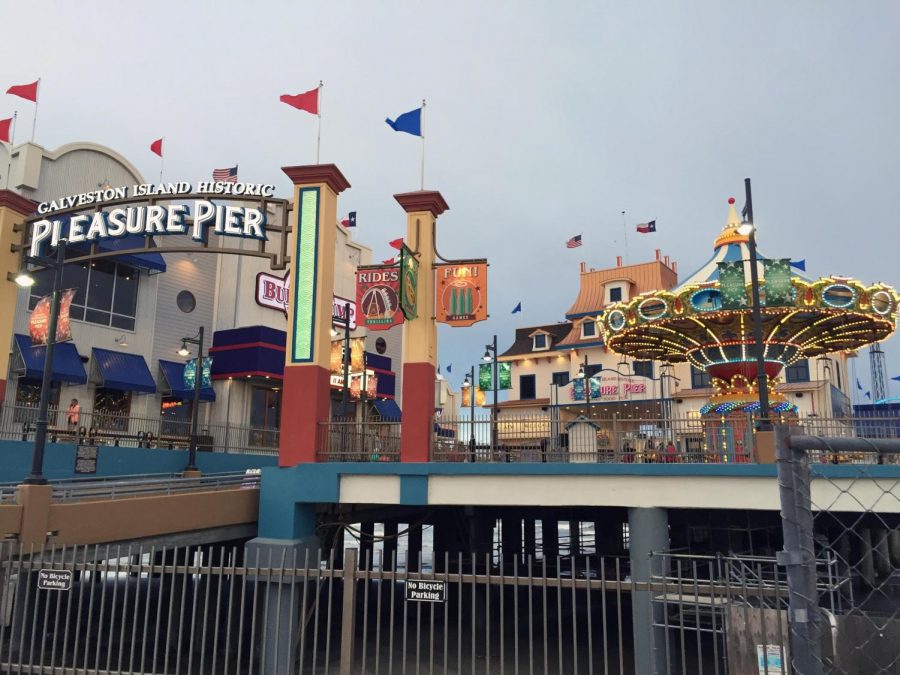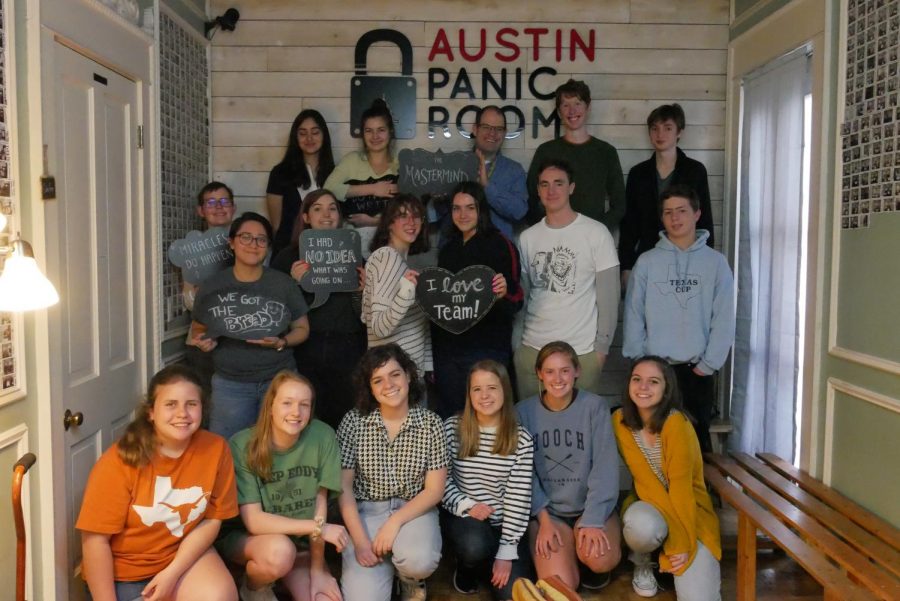Florida, like Texas, is a very diverse state. You’ve got Disney World, the Everglades, retired Midwesterners and down south, the Jimmy Buffett esque paradise also known as the Florida Keys. My trip down there with Boy Scout troop 28 happened in early July, and what a trip it was. Over the course of a week, we covered 50 miles in a sailboat, kayaked among mangroves and snorkeled some coral reefs.
We landed in the Miami airport around noon, and headed south. Our destination was the Florida National High Adventure Sea Base and was located on the Lower Matecumbe Key, about halfway down the island chain. We had arrived in Florida a day early, however, and needed a place to stay the night before we could check into Sea Base the next day. The closest and cheapest place was a campground on West Summerland Key, about 130 miles away from Miami. On the way down, we passed through the Everglades and then the Keys. They reminded me of the barrier islands on the Texas coast, only much more populated and more tropical. There were palm trees just about everywhere and big lizards running along the side of the road.
We were thrown right into the Florida environment that night. First attempting to sleep in the stifling heat then through a windstorm that lasted until about 4 a.m. We had breakfast that morning at a local diner, which would be our last real meal for a while and headed north.
We made it to Sea Base on time and got checked in. Now, I’ve been to two high adventures before this one, so the process was very familiar: We drop off personal items we won’t need, get gear we will need for the trip, have someone go over gear we brought from home that will go on the trip and then sign some forms. After all the items were in their proper place, we met our first mate, who would accompany us on the voyage. He was a 20-something college graduate named Tim. He was from New England and had a slight accent the reminded us of his roots. Our crew was made up of 12 people and each boat could comfortably fit six. Each boat would have a captain with several years of experience, who would make sure things ran smoothly during the trip. Our group’s captain was named Steve, and his ship was called the Quixotic. It was 40 feet long and had a single mast. The cockpit, where the steering wheel was, had a shade cover over it, which would prove to be very nice once we got out in the sun. Below deck was a small kitchen, sitting area, bathroom and bedroom.
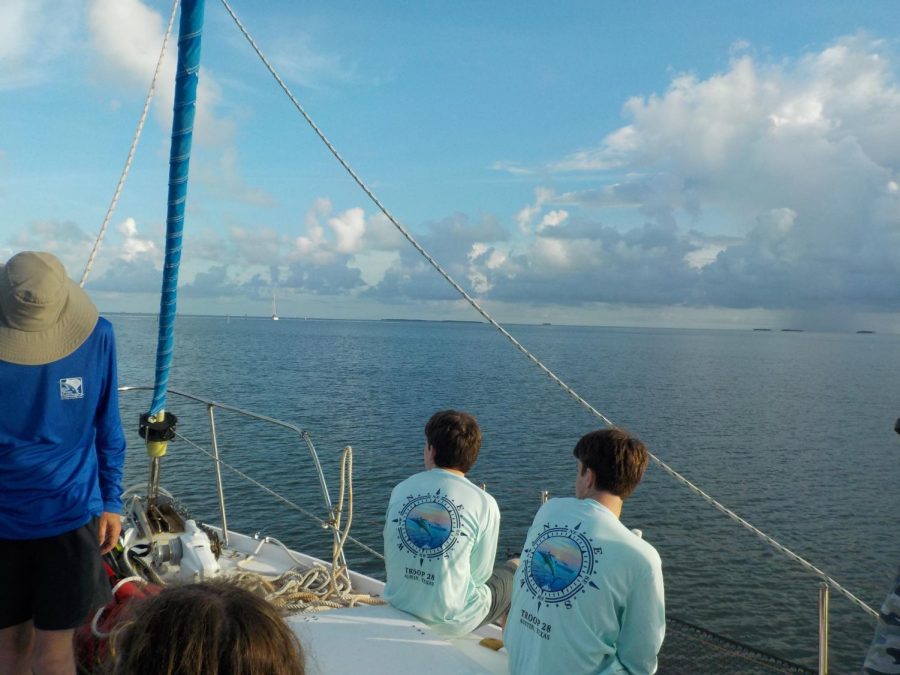
After a quick snorkel review, in which we learned the proper methods of swimming and diving, we had the rest of the day off. There wasn’t very much to do around base camp, so we occupied our time by playing ping pong with some flip flops, as it cost a dollar to rent paddles. That evening the plan was to sleep on the boat while it was at the dock and take off early the next morning. I was interested to see how this would play out. Below deck on the Quixotic was pretty small, and there were seven of us, including Tim. There was a couch, which could be made into a bed, and since I was the only crew member over 6 feet tall, I got dibs on it. One guy got the floor, the two shorter fellows got the table, which could be folded into a bed, and the rest had the bedroom at the bow. That night while we were plugged into the dock, we took full advantage of the ships AC. This would be the last time we would experience cold air for five days.
We set off bright and early the next morning, and headed west. This was the calmer side of the Keys, and the waves were pretty small. While we were sailing, we could see the small islands around us, and captain Steve told us it was like an ice cube tray, with underwater ridges going between the islands and small channels carved out so the boats could pass through. As we went, he would point out people who were unaware of these channels who were stuck on the ridges.
Our first stop was at a mangrove forest. We dropped anchor a couple dozen yards off of the island, suited up in our snorkel gear and swam over. Captain Steve told us the importance of raising the dive flag on the ship while we were in the water, to alert the other ships that we were in the water. One person also would carry a floating diving flag for some extra safety. Once we made it to the mangroves, we got to explore the tangle of roots and the creatures living there. If you just sat still for a while, the fish would come out and you could really get a good look at them. Probably the most interesting thing I saw was a lobster, which definitely looked different from the ones in the tank at the Central Market.
After about a half an hour we raised the anchor, and Captain Steve gave us a quick crash course on sailing. He went over the basics: port is left, starboard is right; bow front, stern back. There is the main sail and the jib (a smaller sail in front of the main). One of the most important things was that there are no ropes on a boat; they are all called lines. And each line has a very specific name and purpose. Lines to raise sails, lines to lower sails. It all seemed very confusing.
After several hours of sailing, we anchored where we’d stay for the night. It was only about 3 in the afternoon, so we had some time for more exploring. This time, we busted out the inflatable kayaks. We were right off another cluster of mangroves, so Tim lead our convoy to get a closer look. He insisted there was a passage through them, although they looked pretty dense. After a few minutes Tim found his mystery passage, and we entered the mangroves. It was pretty tight, which made paddling a little difficult, but the mangroves were growing above us so it provided an interesting vantage point. At one point, someone pointed out what looked like a big black spider on one of the branches. Tim told us it was actually a crab, and after looking a little closer I could see that it definitely was. On the way back, we hopped out of the kayaks and swam our way back to the ships. Underneath us was a bed of sea grass that stretched as far as I could see. It looked like an underwater meadow.
For dinner that night, we fired up the grill and cooked some hamburgers. Throughout the day Tim was hyping up sleeping on deck, saying how it was much preferable to sleeping in the “stuffy uncomfortable” cabin. So I hauled my sleeping pad up and decided to give it a try. Lying there on the deck, I could see a bridge, which had pretty steady traffic over it most of the night. The past high adventures I’d been on we were very far from any form of civilization, but here we weren’t more than a half mile from an interstate highway.
I guess sleeping on the deck of a boat is something you get better at with time because I don’t think I slept for more than 40 minutes.
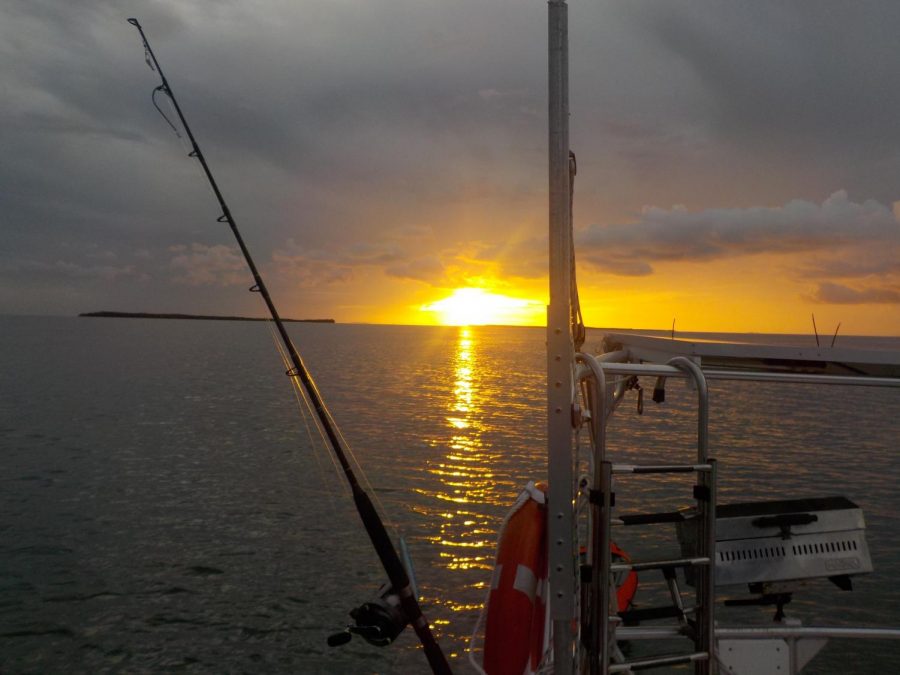
After a hearty breakfast of eggs and sausage, we set off. Today, the plan was to exit the calmer waters of the Florida Bay and enter the Atlantic Ocean. Tim was hyping us up for the bigger waves, telling us that two- or three-foot tall ones was not uncommon. Most of us, if any at all, had never experienced any amount of waves like this before. Both Captain Steve and Tim were used to it, of course, but recommended we take Dramamine, a medication to help with seasickness. I, being the hard-headed person am, refused to take any.
Our route had us pass through a neighborhood that was right on the water. We gazed at the million dollar homes that had garages that could store up to four speed boats. Then we came to the drawbridge, which we had crossed on the way down to Sea Base a few days before. The bridge only opened once every hour, so we had to time our arrival so we wouldn’t have to wait too long. After crossing underneath, the rougher ocean was almost immediately apparent. Captain Steve told us how to properly navigate the rougher seas, by heading into the waves to prevent being pushed over. After a little while of rocking and rolling, we hooked up to a buoy for another round of snorkeling. This was a place called Hens and Chickens, although no one was really sure why. It was a coral reef, which provided for some interesting viewing. We saw the colorful coral, and the tropical fish. Surprisingly, the rough ocean was much less noticeable in the water than on the boat. The water was a little murky and a little deep, so we couldn’t see perfectly, but it was impressive nonetheless.
After about half an hour of snorkeling, I looked up at the boat, and saw it was pitching back and forth much more than before, and huge dark clouds were now above us. All the while, Captain Steve was on deck playing his guitar, unphased by the situation. Climbing up the ladder in this situation is a bit of a challenge. You need to take off your flippers, and you can’t hang on the ladder at all because it will fall off. We all made it up and prepared for the storm.
At that point, the clouds had covered all land around us, which made going in a consistent direction more difficult. That, plus the gusty wind and rain made for a challenge. A challenge that Andrew, one of the scouts, was up for. The waves had gotten worse, and the wind was very strong. With only half the jib out, we were moving at over 8 knots or about 9.25 miles per hour. Now that might not seem very fast, but on a calmer day when we were at full sail plus the motor on we would barley break 5 knots.
At this point, sea sickness was starting to get to some of the fellows, but for me it was the cold. You might not think of southern Florida as getting too cold, especially in early July, but the mixture of the rain and the wind made it pretty chilly. We continued for a while in this crazy condition, and Andrew later admitted that the whole time he was driving the boat the “Pirates of the Caribbean” theme was playing in his head.
After 20-30 minutes of this, we pulled into a cove to wait out the storm. The wind had died down by then, but the rain continued. To occupy ourselves, we stayed below deck and played cards, or slept, in my case. My 40 minutes of sleep the previous night had caught up with me. The rest of the evening was pretty uneventful, except for the hot dogs we had for dinner. I made the decision to sleep inside that night.
The next day we would make our way to John Pennekamp State park at Key Largo and get to walk on land for the first time in a few days. It was very sunny that day, a nice contrast from the storm yesterday. Along the way, Captain Steve pointed out the loud motor boats and told us how sailing was the superior method of travel. As we approached the park, we left the open waters and had to navigate the more narrow channels surrounded by more mangroves. We passed several other boats in the channel, mostly families in rental boats driven by dads wearing orange-lensed sport sunglasses.
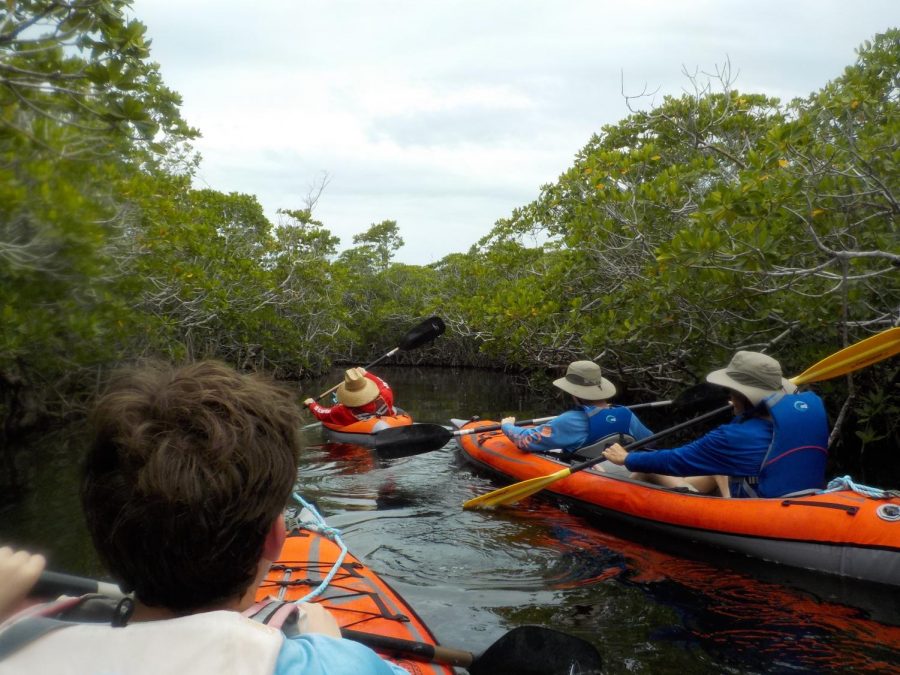
We docked the boat, and got her hooked up to the electricity. That was important because now we could turn the AC on. On our agenda that morning was to go on another kayaking adventure, and do some more snorkeling. This snorkel was similar to the first one, looking at the fish in the mangroves and all that, but this time we saw some little sponges that were vibrant blues and reds.
The rest of the day we spent back at camp In the aquarium watching some movie about fish, or exploring the small store. For dinner that night, we had some Domino’s pizza, which was a nice contrast to the food we had been eating the last few days. That night we played some more cards, and enjoyed the ships air conditioning.
The next day we were to head back toward Sea Base to find a spot to anchor not far off from the harbor. On the way, we planned to stop at another spot for some more snorkeling. For breakfast, I cooked up some pancakes and sausage, and we were ready to go. This snorkel location was at a coral reef. When we got there, the water was very clear and shallow so we could see the reef very well. We saw many very colorful tropical fish, the hard coral and the soft coral that swayed back and forth in the current. There were some sea turtles and some little shrimp. This was probably the most interesting stop on the entire trip. After about an hour, we returned to the boat. The rest of the day we spent on the move, at one point, Captain Steve told us that we were above the wreck of a Spanish ship that had sunk more than 300 years ago. Supposedly, it was the fastest ship in the land, and instead of letting it get captured by the pirates, they sunk it. The only things still visible now, if you’re up for a dive, are some cannons.
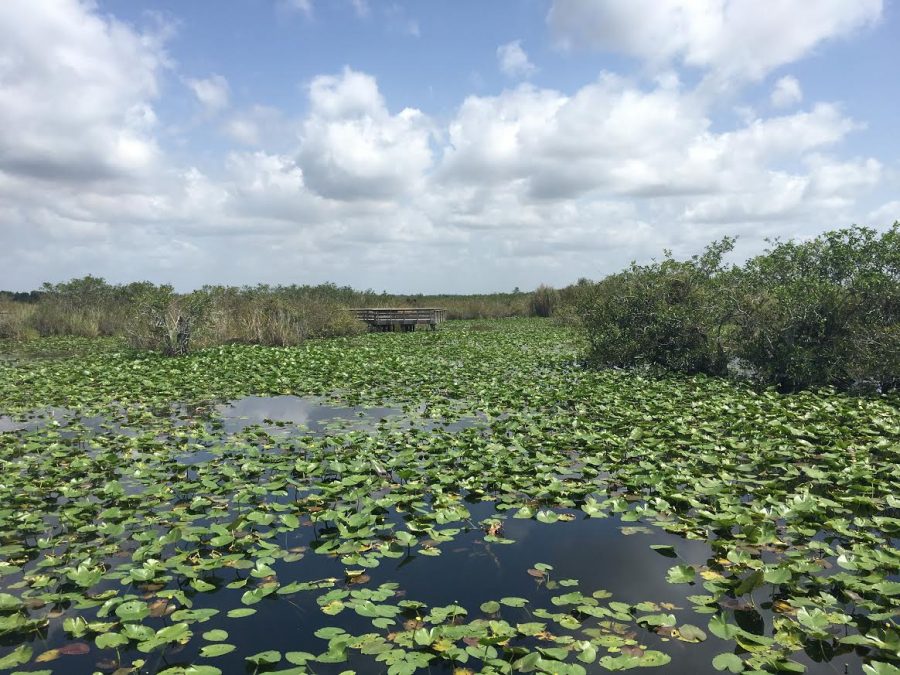
We covered a lot of ground (or water, I guess) that afternoon, and stopped less than a mile from Sea Base for the night. After some steaks for dinner and a nice sunset, we stayed out and star gazed for a while. To the north of us was a patch of sky that looked a little lighter than the rest, but it wasn’t where the sun had set. I pointed it out to Tim and he said it was the lights of Miami, over 70 miles away.
The next morning we cruised into the Sea Base harbor early, and after getting everything off the boat, had the rest of the day off. The next day we would spend in Miami before catching the flight back home. With this I had completed all three high adventures for the Boy Scouts, which is a pretty special accomplishment. First hiking, then canoing and now sailing. Texas may have some good beaches, but I think Florida takes the cake.


